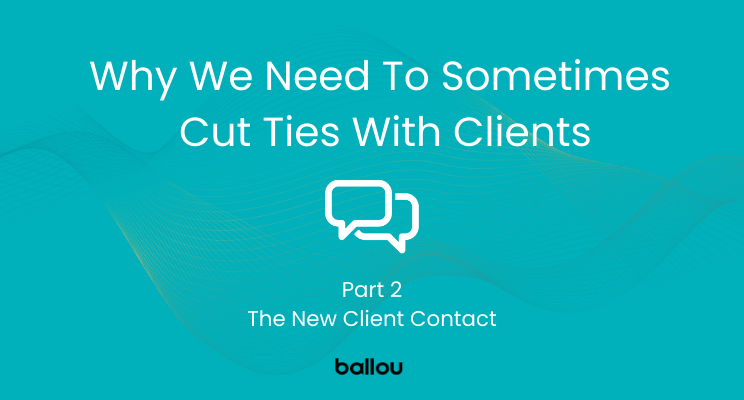This is no.2 of a four-part series examining when to part ways with a client, including examples of when we were successful in working with a client to change a toxic dynamic and times when we were not. The series developed as a part of the reflection in creating our internal training program called Consulting Academy, which trains our colleagues to become consultants using Harvard Business School’s Case Study methodology. One of the modules focuses on nurturing client relationships: what it takes to develop and maintain them, detecting when they are deteriorating, how to address issues constructively, and ultimately repair the relationship so that it’s stronger than ever—or end the relationship responsibly and with grace.
The New Client Contact
It’s been our experience that matters can get complicated when a client brings in a new CMO. A few years ago, we had been pursuing a prospect for almost two years, and were delighted when we signed them. In the process, we had established a deep, trusted relationship, working directly with the CEO. The dynamic changed as soon as they hired a CMO to whom we began answering.
A new CMO—or any new VP in charge of leading an established team in a high-growth company—is frequently under pressure (either self-imposed or from management) to shake things up, and evaluating the service providers they’ve inherited is a part of this process. Furthermore, it’s understandable that a new CMO would want to bring in service providers they’ve worked with previously, but this instinct needs to be balanced with a fair assessment of the established, trusted relationships in place with service providers who not only have put in the time to understand the culture and business thoroughly, but have the courage to speak truth to power—which is who you want on your side, always.
When a client-vendor relationship devolves from having conversations about strategy and positioning to sessions about KPIs, the tone is clear: you’ve gone from being a partner in a consultative relationship to being just another vendor in a transactional relationship. Now, we love a good KPI, but not at the expense of counsel, such as asking us what we think about the market or coming to us for expertise in our field. Moving from a partnership to a transactional vendor relationship signals that we’re just a vendor, and can be replaced, and we know transactional relationships don’t bring out the best in us at Ballou. It’s Healthy Company Culture 101: making your people feel dispensable is not how you are going to get the best out of them. That’s how your insecurity breeds more insecurity.
The solution, in this case, was to spend time with the CMO, having empathy for them and the situation they were in, but also working to gain their trust to find out what the subtext is: have they been given 90 days to make changes or they are out? Are they suddenly being challenged, and about what? How can we help alleviate the pressure?
We’ve had more than a few relationship breakthroughs that truly helped a client when we were able to understand that their actions were fear-based, and allowed them to solidify their position in the organisation when we showed them—or perhaps tinkered with the communications plan together—to help them gain the trust of their management team.
What do we do when empathy isn’t enough to help us find middle ground with the client? That’s when we need to set boundaries—we’ll be going into this in part 3, so stay tuned.


